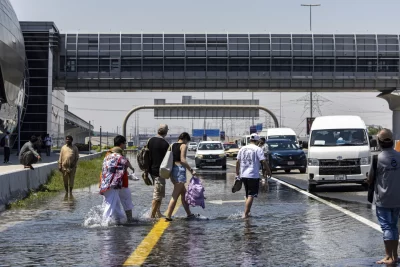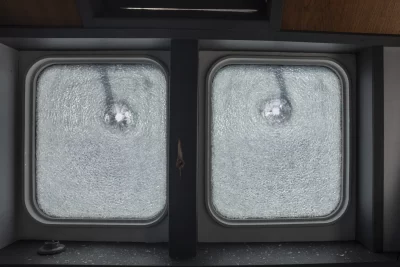
FLINT, Mich. — Their childhood memories are still vivid: warnings against drinking or cooking with tap water, enduring long lines for cases of water, washing from buckets filled with heated, bottled water. And for some, stomach aches, skin rashes and hair loss.
Ten years ago in Flint — April 25, 2014 — city and state environmental officials raised celebratory glasses as the mayor pressed a button to stop the flow of Lake Huron water supplied by Detroit for almost half a century. That set in motion a lead and bacteria public health crisis from which the city has not fully recovered.
But dozens of children of the water crisis — now teenagers and young adults — have turned their trauma into advocacy. They provide input on public health initiatives, participate in social issue campaigns, distribute filters and provide free water testing for homeowners.
They know that Flint is a place that still struggles. The population has fallen by some 20,000 in the past decade, leaving abandoned houses as targets for arsonists. Almost 70% of children live in poverty, and many struggle in school. Although the water has been declared safe to drink, distrust runs deep, and hundreds of lead water pipes remain in the ground because homeowners were allowed to opt out of replacing them.
But the young activists say they want to help make a difference and change how their city is perceived by outsiders. And they want to defy expectations.
“One of the biggest issues about growing up in Flint is that people had already decided and predetermined who we were,” said 22-year-old Cruz Duhart, a member of the Flint Public Health Youth Academy.
“They had ideas about our IQ, about behavioral things, but they never really stopped to speak to us and how we thought about it and the type of traumas that we were going through.”
It’s always been easiest for 16-year-old Sima Gutierrez to express herself through art. Drawings, paintings and wire sculptures decorate her family’s tidy bungalow.
Now the self-described “very shy” teen who rarely spoke up for fear nobody wanted to hear what she had to say collects water samples in people’s homes and takes them to the Flint Community Water Lab, where more than 60 high school and college interns have provided free testing for thousands of residents since 2020.
She helped plan public awareness campaigns about topics like gun violence and how racism affects public health as a member of the Flint Public Health Youth Academy.
“I wanted to be surrounded by people who weren’t going to cover up the whole fact that people are still having problems,” said Sima. “I was able to … share my life (with) anybody else who’s going through what I’m going through.”
It was a decade ago that she complained her stomach hurt when she drank water. Her mom insisted it would help Sima’s body flush out medication she took for an autoimmune disorder that was causing her hair to fall out in patches and leaving her skin with light splotches.
Residents had begun reporting skin rashes and complaining about discolored, smelly and foul-tasting water soon after the city began drawing from the Flint River to save money, until it could hook into a new Lake Huron pipeline. But they were assured everything was fine.
Sima said she wasn’t aware of problems until one of her elementary school classmates, Mari Copeny — then a 7-year-old beauty pageant winner known as Little Miss Flint — began protesting. Mari became the face of the crisis, and continues to highlight environmental justice issues to almost 200,000 Instagram followers and to raise money, including for water filters that she gives out in communities across the U.S.
“I want to keep on using my voice to spread awareness about the Flint water crisis because it’s not just Flint that has a water crisis,” Mari said. “America has a water crisis.”







